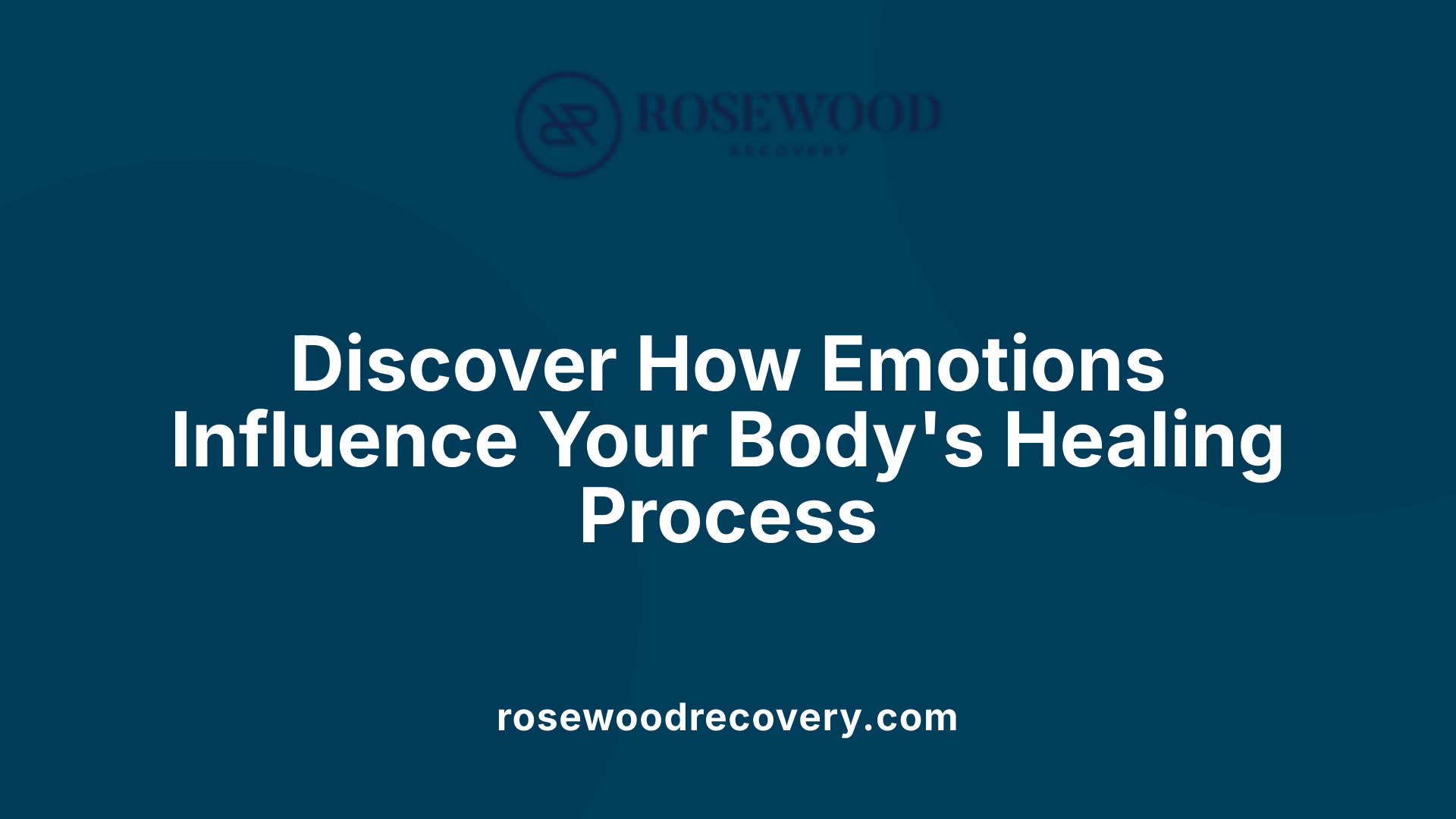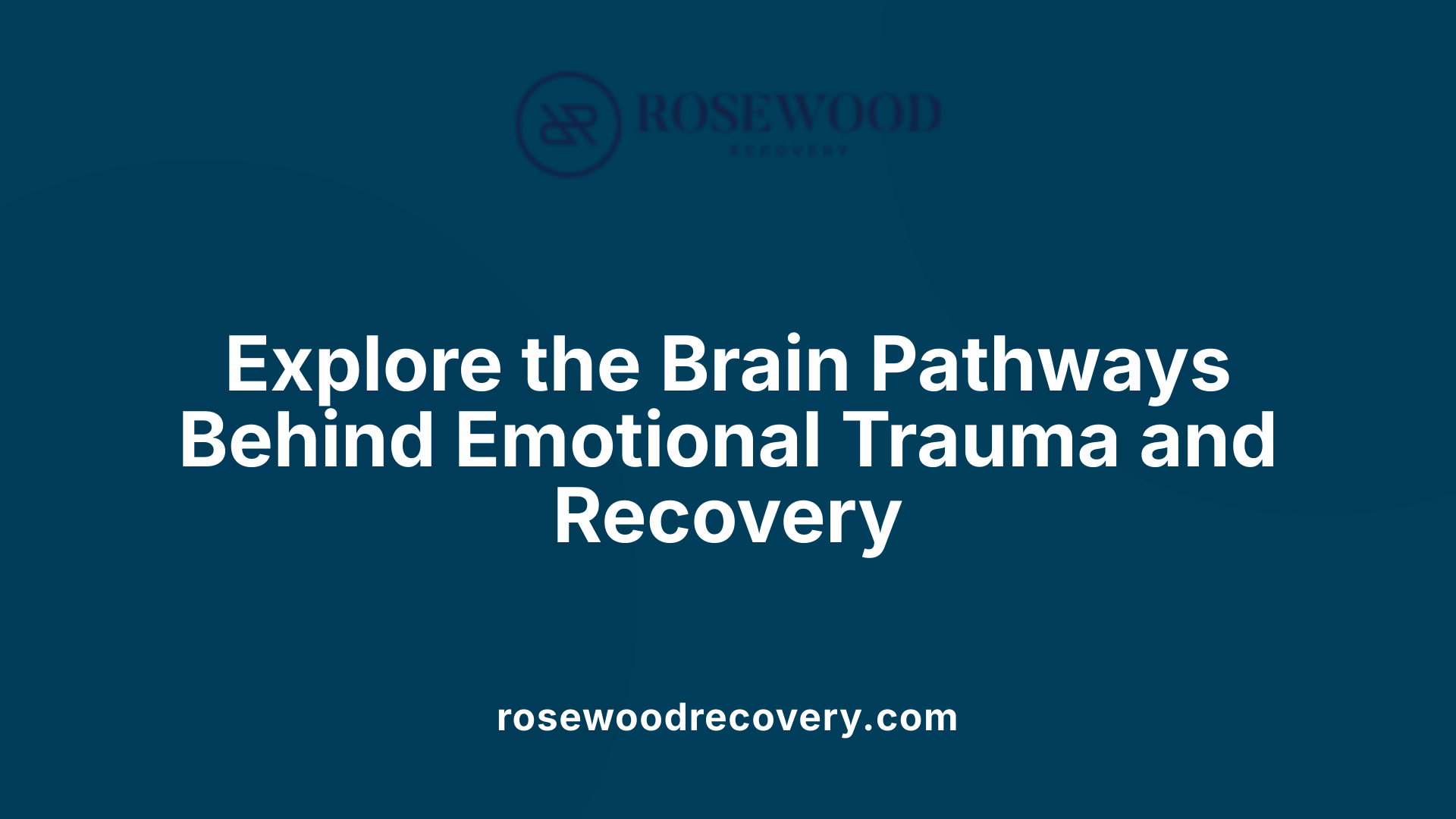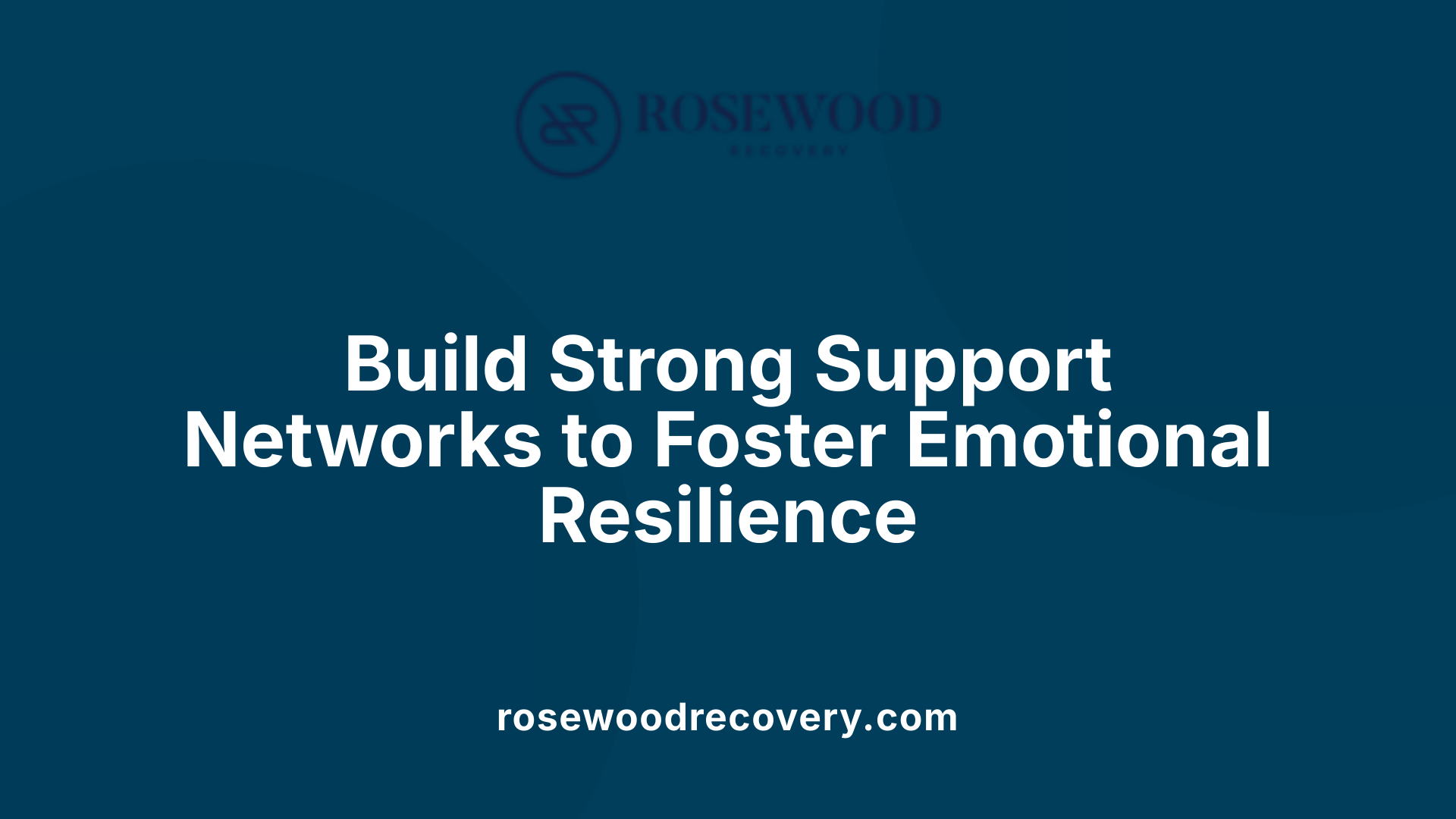The role of emotional discomfort in growth and healing
Harnessing Pain: How Emotional Discomfort Drives Transformation

Understanding the Power of Emotional Discomfort in Personal Development
Emotional discomfort, often perceived as a negative experience, is actually a pivotal component of growth and healing. This article explores how embracing and processing emotional pain can lead to profound personal transformation, supported by scientific research, psychological theories, and real-life stories.
The Physiological and Emotional Interconnection in Healing

How do emotions affect healing?
Emotions are not just mental experiences but are biochemical events that occur throughout the body. When we feel emotions such as sadness, anger, or anxiety, they trigger physiological responses involving various systems and organs. For example, negative emotions can activate the body's stress response, releasing hormones like cortisol and adrenaline. Over time, ongoing emotional distress can lead to physiological imprints, such as heightened inflammation, fatigue, and weakened immune function.
Physiological imprints of emotional pain often manifest physically—many individuals experience symptoms like muscle tension, headaches, or persistent fatigue. These body responses serve as signals, revealing unresolved emotional wounds that need attention. When emotional pain is acknowledged and processed, it can lead to physical relief. Techniques such as body awareness, mindfulness, and somatic therapies help uncover these emotional signals stored in the body, facilitating healing.
Practicing gentle check-ins and paying attention to bodily sensations foster a deeper connection between mind and body. This reconnects individuals with their true selves beneath daily stress and emotional protection layers. Recognizing bodily signals allows for a more integrated approach to health, supporting both emotional resilience and physical recovery.
Ultimately, healing is enhanced when we listen to what our bodies communicate. By embracing our emotional signals as vital information, we can promote a holistic healing process that aligns mental and physical wellbeing. Cultivating this awareness transforms pain into a meaningful guide towards health, strength, and inner harmony.
The Neuroscience of Emotional Pain and Healing

What is the role of emotions in trauma recovery?
Emotions are more than just fleeting feelings; they are deeply embedded in our brain's structure and influence our healing process after trauma. In trauma recovery, emotions act as signals and guides, affecting neural and immune mechanisms that form the psychoneuroimmune continuum.
Positive emotions and risk-taking behaviors are crucial. They activate brain pathways that promote resilience by encouraging engagement with life’s opportunities. This adaptive approach helps rewire neural circuits, fostering a sense of safety and trust in oneself.
Conversely, unresolved trauma often leaves behind neural 'archives'—persistent patterns that sustain distress. These maladaptive trauma responses can activate ongoing neuroimmune reactions, which not only perpetuate emotional pain but also contribute to physical symptoms like chronic pain and fatigue.
In terms of brain activity, trauma responses involve regions like the amygdala, which processes fear and threat, and the prefrontal cortex, responsible for decision-making and emotional regulation. The activation of these areas during traumatic events can create lasting neural pathways that influence how we respond to similar situations later.
Furthermore, the ability of the brain to change—its plasticity—is vital for recovery. When a person consciously practices emotional regulation, mindfulness, or engages in therapy, neural pathways are reshaped, reducing the influence of past trauma.
Through understanding how emotional and physical pain are intertwined in neural networks, we recognize that fostering positive emotions and flexible responses is fundamental. Such strategies help dissolve neural 'archives' of trauma, paving the way for emotional healing and resilience.
How do trauma and grief activate neural pathways?
Trauma and grief trigger specific neural pathways that are essential for processing deep emotional pain. Brain regions such as the anterior cingulate cortex, insula, amygdala, and prefrontal cortex fire intensely during painful emotional states.
Research has shown that social rejection, grief, and emotional trauma activate areas also involved in physical pain, suggesting a shared neural basis. This activation explains why emotional pain can feel as intense as physical injury.
Trauma may imprint certain neural pathways that reinforce negative beliefs or fears, creating a cycle of distress. Grief can also activate neural circuits involved in attachment and social bonding, highlighting the physiological impact of emotional loss.
However, these pathways are not fixed. With deliberate emotional processing—through therapy, mindfulness, or expressive activities—they can be rewired, reducing their harmful impact.
How does neural plasticity support recovery?
Neural plasticity—the brain’s ability to adapt and reorganize—is central to emotional healing. When individuals acknowledge their pain, practice new coping strategies, or cultivate positive emotions, they promote neural rewiring.
Therapeutic methods like cognitive-behavioral therapy, mindfulness, and body-awareness techniques leverage plasticity to diminish maladaptive neural patterns, forming healthier responses over time.
By engaging in activities that foster resilience, such as journaling or visualization, individuals help create new neural pathways that support emotional regulation and a greater sense of well-being.
This ongoing neuroplastic process underscores that healing from emotional pain is not about forgetting but about rewiring the brain to respond differently and more adaptively to life’s challenges.
| Brain Region | Function/Role in Pain & Healing | Neural Pathways Activation | Additional Notes |
|---|---|---|---|
| Amygdala | Processes fear, threat, and emotional responses | Activation during trauma and grief | Key in emotional reactions and threat detection |
| Prefrontal Cortex | Regulates emotions, decision-making | Engaged in emotional regulation tasks | Critical for resilience and adaptive responses |
| Insula | Involved in emotional awareness and pain | Active in emotional distress and bodily sensations | Connects physical sensations with emotion |
| Anterior Cingulate Cortex | Modulates emotional responses to pain | Activated in social rejection and physical pain | Key in empathy and emotional regulation |
Understanding the movement and interaction of these neural pathways highlights the importance of emotional awareness and intentional healing practices to promote resilience and recovery.
The Impact of Emotional Discomfort on Personal Growth

Why does healing feel so uncomfortable?
Healing is often accompanied by discomfort because it calls for deep emotional work that can challenge our sense of security and control. When we face unresolved issues or suppressed emotions, we may experience emotional and physical distress as these feelings surface. This process involves acknowledging both positive and negative emotions, which can evoke feelings of vulnerability, sadness, or fear.
Moreover, healing pushes us out of familiar routines and comfort zones. It requires setting boundaries, letting go of old beliefs, and accepting experiences that may feel painful. Since emotional recovery isn’t a straightforward path, waves of emotion and setbacks are common, making it a non-linear journey.
Yet, this discomfort is a sign of growth. Embracing support—like therapy, mindfulness, and self-compassion—and practicing forgiveness can foster inner peace. Although the process can be challenging, the ultimate reward is a more integrated self, characterized by resilience and authentic connection.
Strategies for Embracing and Navigating Emotional Discomfort
How does emotional development influence personal growth?
Emotional development is fundamental to personal growth because it helps us build essential social skills such as emotional regulation, sharing, and following instructions. These skills are crucial for success in school, work, and life.
Responsive relationships with caregivers and access to quality early learning experiences greatly support the development of these skills. When children experience positive interactions and are supported in understanding and managing their feelings, they develop resilience and social competence.
Early adversity or trauma can impact this development, potentially leading to challenges in mental health and emotional regulation later in life. Conversely, nurturing emotional growth in early childhood—especially within the first three years—can promote not only social skills but also boost cognitive abilities, physical health, and economic stability.
Supporting emotional development during these formative years sets a foundation for lifelong personal growth. It enables individuals to navigate relationships, handle stress, and adapt to various life challenges. As adults, those with well-developed emotional skills tend to form healthier relationships, make better decisions, and have greater overall well-being.
Ultimately, fostering emotional growth early on enhances resilience and helps individuals thrive both emotionally and socially throughout their lives.
Techniques for Embracing and Moving Through Discomfort
Effective strategies for managing emotional discomfort include practicing mindfulness and increasing bodily awareness. Mindfulness exercises, such as body scans and meditative breathing, help in recognizing and accepting emotional states without judgment.
Self-compassion plays a vital role too. Offering gentle kindness to oneself during difficult times can soften emotional pain and foster inner resilience. Techniques like self-talk, compassionate journaling, and gentle movement support this process.
Breaking goals into smaller, manageable steps makes facing discomfort less overwhelming. This approach encourages patience and perseverance, helping individuals gradually expand their comfort zones.
Practical tools and exercises
| Technique | Description | Example |
|---|---|---|
| Mindfulness meditation | Focusing on present moment awareness to accept feelings without judgment. | Daily body scan to notice sensations and emotions. |
| Self-compassion practices | Cultivating kindness toward oneself during emotional distress. | Using affirmations like “It’s okay to feel this way.” |
| Breaking goals into steps | Dividing a large challenge into smaller parts for easier navigation. | Setting weekly milestones for a new skill. |
| Movement and body awareness | Using gentle movements or yoga to connect with bodily sensations. | Practicing yoga poses that focus on breathing. |
| Journaling | Writing about feelings to process and understand emotional experiences. | Keeping a daily emotional journal. |
Adopting these approaches helps individuals move through emotional discomfort with grace, transforming pain into opportunities for growth and greater self-understanding. Developing resilience through these practices fosters a deeper connection with oneself, paving the way for a more fulfilling and balanced life.
The Role of Self-Compassion and Mindfulness in Healing
What is the role of emotions in trauma recovery?
Emotions are deeply intertwined with trauma recovery. They influence neural pathways and immune responses, creating a complex system that impacts healing. When trauma occurs, it activates specific brain regions, such as the amygdala and prefrontal cortex, which regulate emotional responses.
Fostering positive emotions and risk-taking behaviors can promote resilience, helping individuals engage more effectively with their environment. This proactive engagement encourages adaptive processing and growth. On the other hand, negative emotional patterns such as avoidance or rumination can create neuroimmune 'archives'—persistent memories embedded in the brain and immune system—that hinder recovery.
Physical changes in the nervous system, including altered neural plasticity and neuroimmune responses, often result in ongoing pain, anxiety, or PTSD symptoms. These biological responses can make emotional wounds feel persistent and ingrained.
Practicing kindness and patience with oneself becomes crucial. Approaching emotional scars with self-compassion allows individuals to confront pain without judgment, facilitating the release of resentment and fostering forgiveness. Mindfulness techniques, such as body scan meditation and mindful breathing, improve emotional regulation by increasing awareness of bodily sensations and emotional states.
These practices help break the cycle of reactivity, allowing space for healing and self-acceptance. Recognizing that emotions serve as signals rather than enemies shifts perspective, motivating healing processes. Integrating self-forgiveness into trauma recovery diminishes self-blame and promotes a compassionate outlook, essential for recovering resilience and restoring well-being.
In essence, emotions guide trauma recovery by triggering adaptive responses when acknowledged and nurtured. Combining kindness, mindfulness, and self-forgiveness creates a supportive environment for emotional healing, ultimately empowering individuals to move beyond their trauma.
The Healing Journey: Steps and Signs of Progress
How do emotions affect healing?
Emotions play a pivotal role in both physical and psychological healing processes. Negative feelings like trauma, grief, or anger can trigger chronic stress responses in the body, leading to increased inflammation, weakened immunity, and accelerated aging. When unresolved, these emotions may manifest physically as pain, fatigue, or illness.
On the other hand, positive emotions such as gratitude, compassion, and serenity activate the body's relaxation response. These feelings support resilience, improve immune function, and speed up recovery from various ailments. Practices like emotional regulation, forgiveness, and cultivating gratitude are instrumental in boosting overall wellbeing and facilitating the healing journey.
By consciously managing emotional states, individuals can create a healthier internal environment. This enhances both mental clarity and physical health, making emotional regulation a crucial component of recovery and growth.
The stages of emotional healing (denial, anger, acceptance)
Emotional recovery often follows a recognizable path, initially involving denial—refusing to acknowledge pain. This stage is followed by anger, as feelings of frustration or resentment surface.
Progressing further, many move into bargaining, where they seek ways to undo or control pain, and depression, marked by deep sadness or helplessness. Ultimately, acceptance signifies coming to terms with the reality of the situation, allowing healing to occur.
Understanding these stages helps individuals navigate their feelings with patience and compassion, recognizing that healing is not a linear process but a cycle with ups and downs.
Practical tools like journaling, visualization, therapy
Several accessible techniques support emotional healing. Journaling encourages self-reflection and helps articulate complex feelings, transforming emotions into insights. Visualization exercises can foster positive imagery and reframe negative perceptions, promoting hope and resilience.
Psychotherapy, including modalities like Acceptance and Commitment Therapy (ACT) or Dialectical Behavior Therapy (DBT), offers structured pathways to process emotions, develop coping skills, and reframe past experiences.
Other tools such as mindfulness meditation, gratitude practices, and body awareness exercises facilitate a deeper connection with one's internal states, helping to release stored trauma and build emotional strength.
Indicators of emotional recovery (self-awareness, better relationships)
Signs that emotional healing is taking root include increased self-awareness—an ability to recognize and understand one's emotions more clearly. This awareness often leads to improved relationships because individuals communicate their needs better and respond more empathetically.
Enhanced resilience manifests as reduced reactivity to stress, greater acceptance of difficult emotions, and a sense of inner peace. Physical health benefits, such as improved sleep, reduced pain, and increased energy, can also indicate progress.
Furthermore, a shift from feeling like a victim to a thriver signifies emotional growth, empowering individuals to navigate life's challenges with strength and clarity.
| Aspect | Description | Impact |
|---|---|---|
| Emotional stages | Denial, anger, bargaining, depression, acceptance | Map emotional progress |
| Healing tools | Journaling, visualization, therapy | Facilitates processing |
| Signs of progress | Self-awareness, better relationships, resilience | Indicators of recovery |
Embracing this journey of emotional healing transforms pain into personal growth, enriching life with deeper understanding and authentic connections.
Creating Supportive Environments for Emotional Growth

The importance of social support and relationships
Healthy relationships and social connections are vital for emotional well-being. When facing emotional pain, sharing experiences with trusted friends, family, or community groups can foster a sense of validation and belonging. These interactions activate reward centers in the brain, releasing neurotransmitters like oxytocin, which help alleviate emotional distress. Strong social bonds provide emotional safety nets, encouraging individuals to express vulnerability and seek help without fear of judgment.
Role of therapy, support groups, and structured self-exploration
Professional avenues like therapy, support groups, and structured self-exploration play a crucial role in emotional healing. Therapies such as Acceptance and Commitment Therapy (ACT) and Dialectical Behavior Therapy (DBT) offer tools for managing emotional dysregulation. Support groups provide shared understanding and collective healing, reminding individuals they are not alone in their struggles. Engaging in activities like journaling, visualization, or mindfulness practices enables deeper self-awareness, helping users process feelings and reframe painful experiences.
Boundaries and self-care
Setting healthy boundaries is essential for maintaining emotional health. This includes learning to say no, distancing from toxic relationships, and prioritizing personal well-being. Self-care practices—such as regular exercise, sleep, nutritious eating, and activities that bring joy—strengthen resilience. These approaches help create a supportive environment that nurtures emotional growth, allowing individuals to heal more fully and develop stronger capacity for future challenges.
| Aspect | Focus | Benefits |
|---|---|---|
| Social Support | Relationships & community | Reduces isolation, fosters validation, activates reward circuits |
| Professional Support | Therapy & self-exploration | Provides coping tools, facilitates self-awareness |
| Boundaries & Self-Care | Personal limits & routines | Enhances resilience, prevents burnout |
Building a supportive environment involves integrating social ties, professional help, and self-care habits, fostering sustainable emotional growth and resilience.
Embracing Discomfort for Lasting Transformation
While emotional discomfort can be challenging and at times overwhelming, it is an essential pathway to profound growth and healing. By understanding the deep connection between our body and emotions, practicing mindful awareness, cultivating self-compassion, and actively engaging with our pain, we transform suffering into a source of strength. This journey requires patience, support, and a willingness to face the unknown, but ultimately leads to a more authentic, resilient, and fulfilled self.
References
- The Body's Role in Emotional Healing | Psychology Today
- How to Heal Emotional Pain and Turn It into Strength - Denise G. Lee
- Why Feeling Your Pain Is the Key to Emotional Healing
- The Importance of Emotional Regulation in Mental Health - PMC
- What We Resist Persists: Embracing Discomfort as a Path to Growth ...
- The Stages of Emotional Healing: Understanding the Journey
- The Only Way Out Is Through: Embracing Pain for Healing and Growth
- Healing Emotional Pain & Letting Go of the Past - Chateau Recovery
- Emotional Pain and Personal Growth - Connections Counseling
More Articles
Recovery Begins Here
Click below to get in touch and schedule a consult call with our team to begin your journey towards happiness and freedom.
Rosewood Recovery does not discrimate against any person because of the race, color, religious creed, ancestry, age, sex, sexual orientation, gender identity, national origin, handicap or disability or the use of a guide or support animal because of the blindness, deafness or physical handicap.





